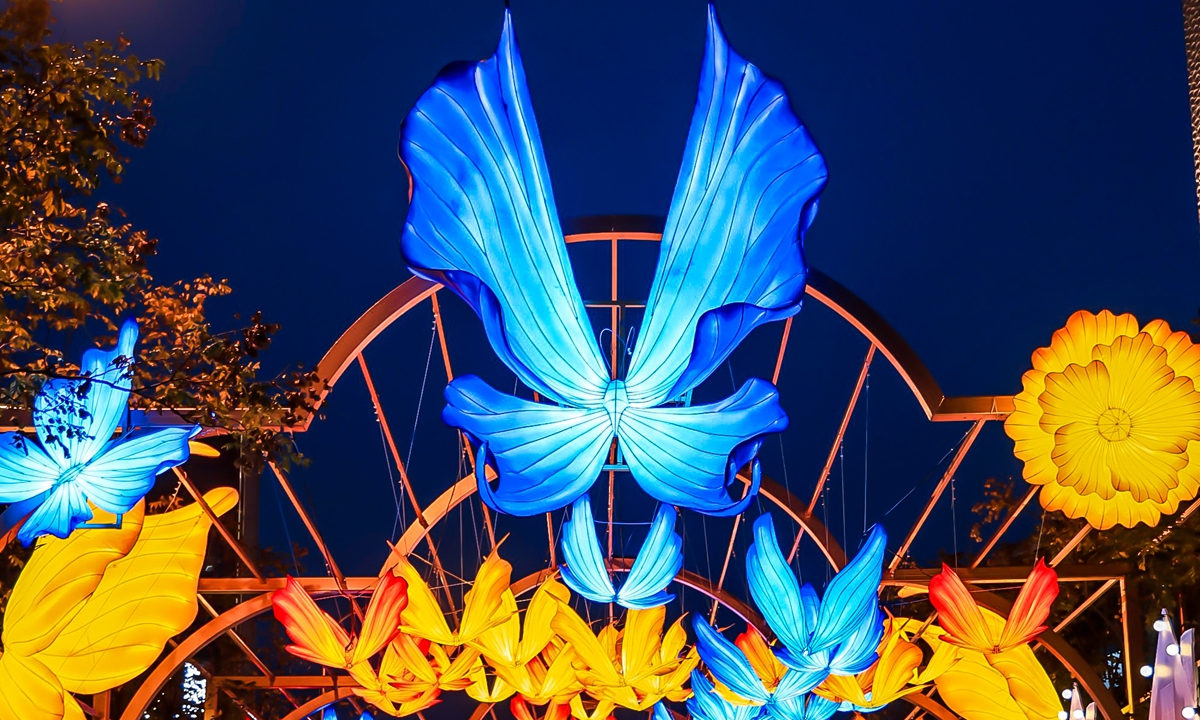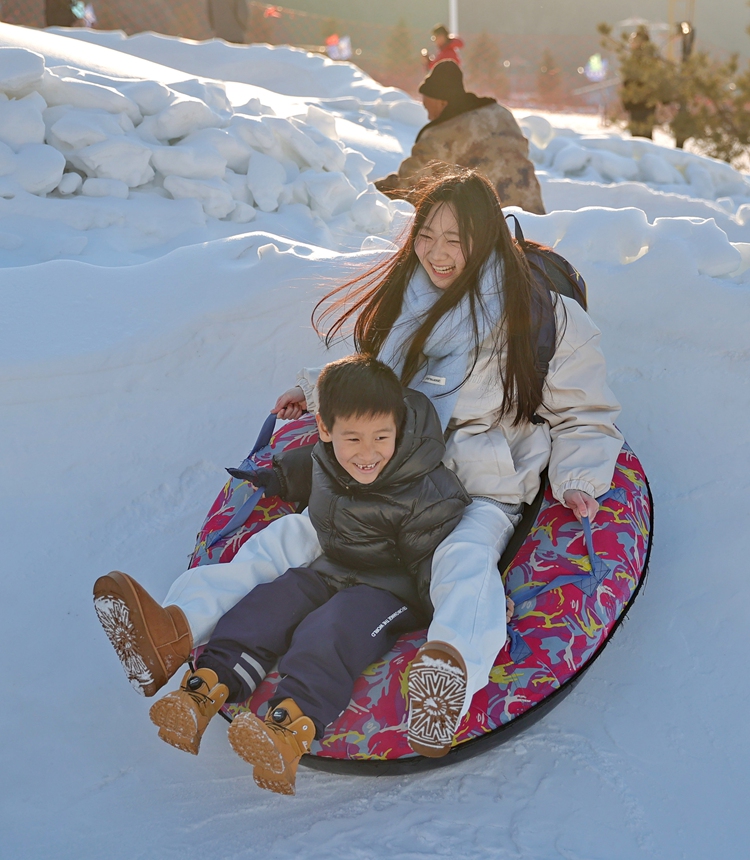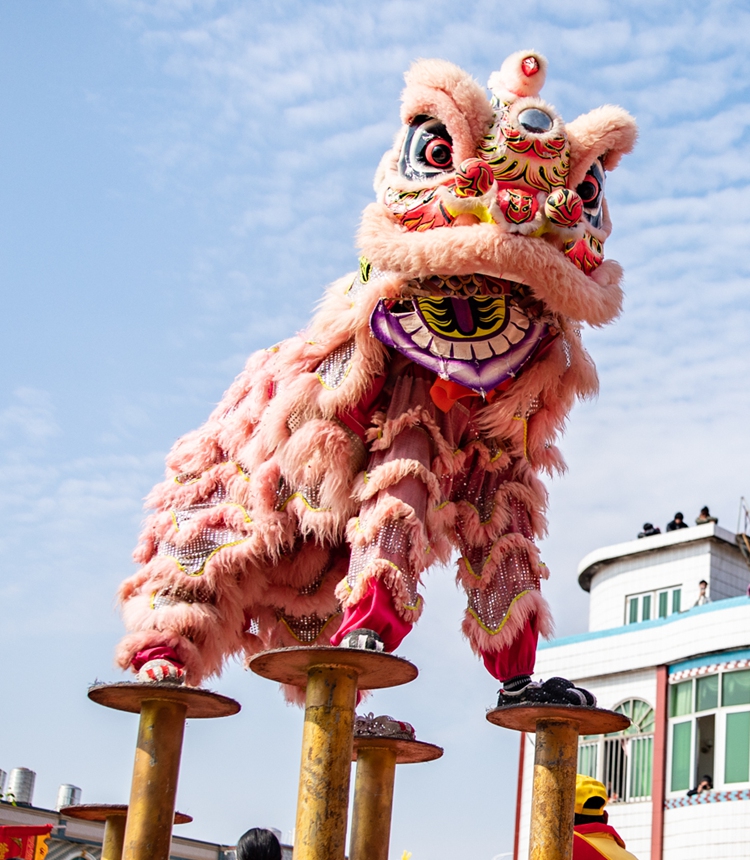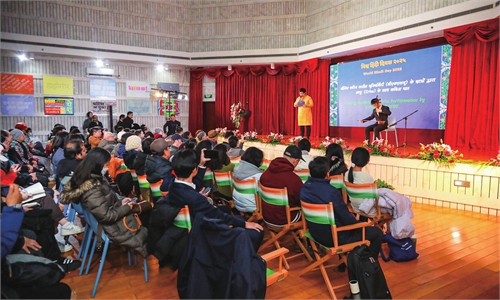ARTS / CULTURE & LEISURE
Localities around China gear up for New Year-Spring Festival season
Celebrating a fresh, joyful start

People move through a pedestrian corridor decorated with butterfly lanterns in Shanghai. Photo: Courtesy of Yuyuan Lantern Festival organizers
As New Year's Day approaches, cultural and tourism authorities across China have successively announced a wide range of cultural and sports activities scheduled for the upcoming New Year and Chinese Spring Festival holidays.From winter sports to mountain climbing and immersive experiences with intangible cultural heritage, the initiatives reflect a blend of tradition and modern chic. Also, tourist attractions across the country have announced off-season discount policies.
For example, some tourist sites are launching free admission campaigns targeting students who are on winder vacations. Northern cities such as Beijing are shifting the focus toward ice and snow.
The Beijing Municipal Bureau of Culture and Tourism announced on Saturday that during the 2025 New Year and Spring Festival holidays, Beijing will introduce 115 ice and snow events.

Tourists enjoy snow tubing at the Laojunding scenic area in Qinhuangdao, North China's Hebei Province on December 29, 2024. The area is diversifying itself as a winter tourist attraction in recent years, according to local media. Photo: VCG
Enthusiasm for ice & snowExplaining why ice and snow activities have become increasingly appealing, Luo Le, a sports scholar at the Beijing University of Chemical Technology, told the Global Times: "Since China's successful bid for the Beijing 2022 Winter Olympics and its subsequent hosting, promoting ice and snow events has become a sustained government initiative. On the grassroots level, the Olympics helped the public recognize the popularity of winter sports."
It has been more than two years since the Beijing 2022 Winter Olympics, but the enthusiasm for ice and snow events has not diminished.
Data shows that since the successful hosting of the Beijing 2022 Winter Olympics, the number of participants in ice and snow sports nationwide has reached 313 million. Among them, 264 million people participated in ice and snow events since the start of the winter season in 2023.
"Organizing various types of fitness activities during the New Year and Spring Festival holidays is a very important tradition. In recent years, there has been a greater focus on developing activities that are trendy, entertaining, and appealing to the young," said Luo.
Among the various sports and fitness activities to mark 2025, mountaineering events are many people's favorites. In China, climbing to pray for blessings is a time-honored custom, symbolizing good health and longevity.
The General Administration of Sport of China has been organizing nationwide climbing events since 1996, attracting over one million participants annually. Local government departments across the country have also actively responded to the call.
For instance, Hangzhou in East China's Zhejiang Province, will hold annual New Year climbing event with a 5 kilometer route. The journey takes approximately two hours and is open to participants aged from five to 75.
"Generally speaking, there are two key moments for promoting nationwide climbing events, one being August 8, the National Fitness Day in China, and New Year's Day with its climbing events. The related departments are collaborating with short-video platforms by creating hashtags, inviting more people to share their New Year climbing experience on social media," said Luo.
In the beginning of 2024, under the guidance of the General Administration of Sport, the Chinese Mountaineering Association created the hashtag #letsmeetatthepark for the New Year climbing campaign, garnering 370 million views on Douyin, the Chinese version of TikTok.

A lion dance performance is held in Zhangzhou, East China's Fujian Province on December 15, 2024. Photo: VCG
Blending ICH with festivalsFrom exhibitions to gaining hands-on experience, intangible cultural heritage (ICH) has become an essential part of festival celebrations in China, especially for New Year's Day and the Spring Festival.
Take the renowned Yuyuan Garden lantern festival in Shanghai as an example. Recognized as a national intangible cultural heritage, the event has become a premium Chinese New Year celebration in China.
The festival is set to illuminate the city starting January 1, running through February 12. This year's theme draws inspiration from the ancient literary work Shanhaijing, or The Classic of Mountains and Seas, a major source of Chinese mythology that dates back more than 2,000 years ago. Incorporating various elements of animals, forests and mountains, the lantern installations aim to present a vibrant and harmonious scene of diverse life forms.
To mark the special occasion of the 30th anniversary of the fair, a special exhibition on Chinese lantern art, the first of its kind in Shanghai, will be held from January 1, 2025, along with the lantern festival.
Bu Xiting, associate researcher with the School of Cultural Industries Management at the Communication University of China, emphasized the unique role traditional festivals play in the "creative transformation and innovative development" of ICH.
Elsewhere, the China National Arts and Crafts Museum in Beijing is hosting an exhibition featuring over 120 ICH items tied to the Spring Festival. The exhibition showcases representative intangible cultural heritage items from different regions associated with the Spring Festival.
In Huaibei, East China's Anhui Province, dragon dances light up the festivities, while in Dunhuang, Gansu Province, the ancient craft of molten iron firework performances add a spark to the celebrations. In Lu'an, Anhui, the traditional huohu (fire pot) show takes center stage. These "ICH for the New Year" events infuse festivals with a distinctive charm, blending heritage with modernity.
The interactive activities of ICH, such as workshops on traditional crafts or performances of classical operas, act as a bridge between the past and present, Bu said.



